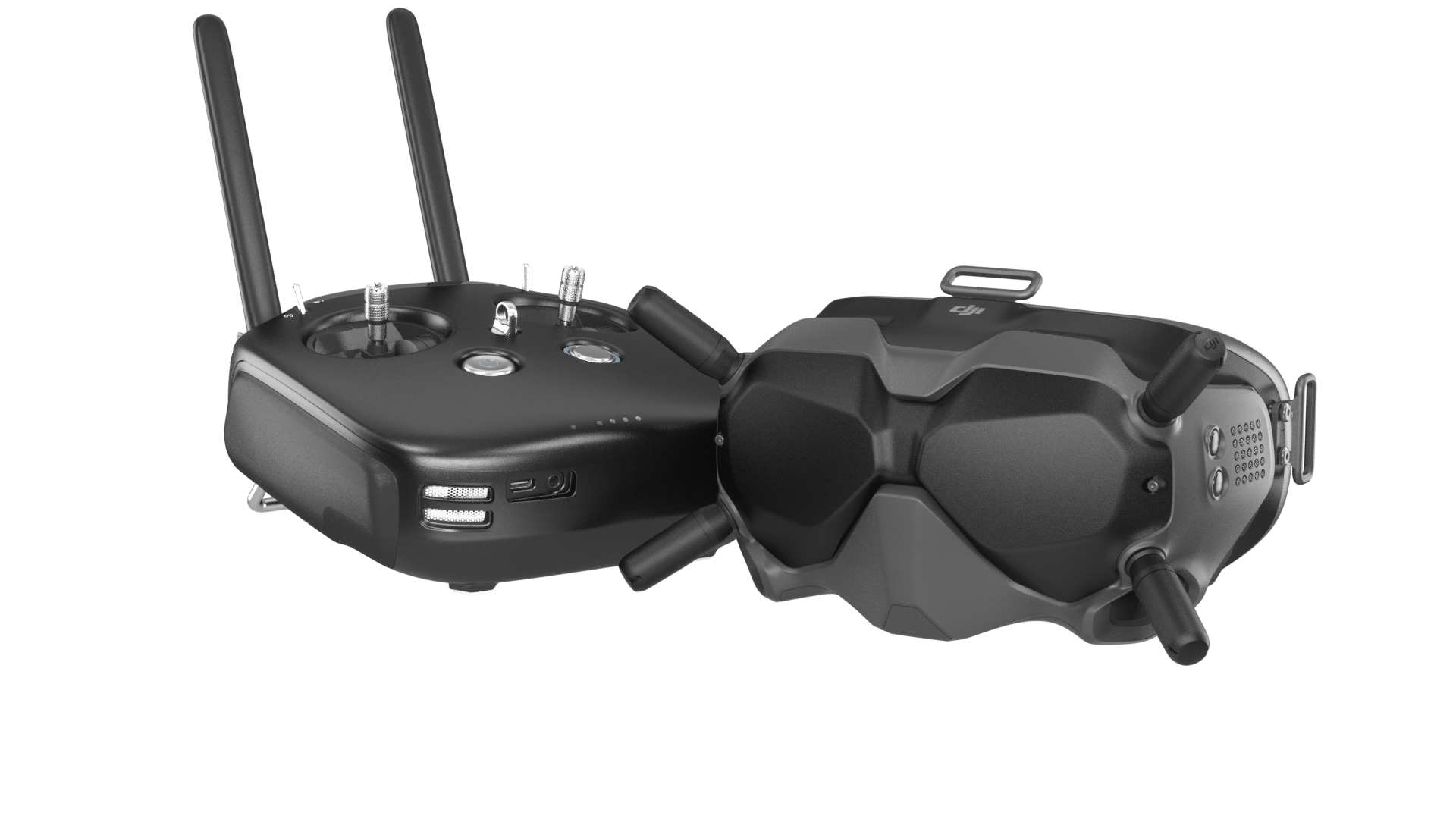DJI

Company launches its FPV ecosystem for racing drones
Drone racing is a rapidly emerging trend in applications for civilian aerial robots. DJI has announced plans to improve its support for this new sport with the first-person-view (FPV) goggles and controller set. It allows a given competitor to see and direct a race from their drone's point of view.
DJI has announced its plans to set up its own brand, all-digital ecosystem for drone racing. So far, this largely consists of the new first-person-view (FPV) goggles and controller. This new set, called the DJI Digital First Person Viewing (FPV) Transmission System, incorporates the company HD Low Latency FPV Transmission technology.
This system allows for 2-way data communication between the drone and the googles with a latency of 28 milliseconds. It works over a maximum range of 2.5 miles, and supports recording on both cameras found on both the drone in question and the goggles themselves (they have a microSD card slot).
The former records in 1080p at 60 fps or 720p at 120 fps, whereas the last can record in 720p at 60 fps. In the case of the goggles, the resulting footage can be played back instantly for immediate review. The new DJI FPV ecosystem is also equipped with eight 5.8GHz frequency channels, which allows up to 8 competing robots to fly simultaneously under one system, with one channel per drone (kind of like a LAN for racing drones).
Drone racing is a rapidly emerging trend in applications for civilian aerial robots. DJI has announced plans to improve its support for this new sport with the first-person-view (FPV) goggles and controller set. It allows a given competitor to see and direct a race from their drone's point of view.
DJI has announced its plans to set up its own brand, all-digital ecosystem for drone racing. So far, this largely consists of the new first-person-view (FPV) goggles and controller. This new set, called the DJI Digital First Person Viewing (FPV) Transmission System, incorporates the company HD Low Latency FPV Transmission technology.
This system allows for 2-way data communication between the drone and the googles with a latency of 28 milliseconds. It works over a maximum range of 2.5 miles, and supports recording on both cameras found on both the drone in question and the goggles themselves (they have a microSD card slot).
The former records in 1080p at 60 fps or 720p at 120 fps, whereas the last can record in 720p at 60 fps. In the case of the goggles, the resulting footage can be played back instantly for immediate review. The new DJI FPV ecosystem is also equipped with eight 5.8GHz frequency channels, which allows up to 8 competing robots to fly simultaneously under one system, with one channel per drone (kind of like a LAN for racing drones).
by Deirdre The Donnell

No comments:
Post a Comment